Once you have entered the System, you will have access to…
Community Lab
(partially located at Local Health High School)
- Preventive Care Services include:
Yearly lab work – pre-diabetes, pre-cancer, plus pediatric screenings for hearing, vision, autism, developmental disorders, depression, and obesity; Weight, Blood Pressure, lung/fitness testing
- Student-aided Clinics include:
Physical Therapy, fitness training, Body Composition Testing (Body Pod, DEXA, Underwater Weighing, Bioelectrical Impedance), Occupational Therapy; Student-aided Lab: hemoglobin A1c test, fasting plasma glucose (FPG) test, cholesterol test [lipid panel], etc.

Community Lab Logistics
Infrastructure Loan Cost: $3.27 Billion covers the building of a Lab in every Community.
SALARIES:
To do labs for all 100,000 population, we would need to see 14 patients every half hour 12 hours a day, 6 days a week for 50 weeks. Staff would need to include:
- 28 nurses X $60k X 3271 = $5.5 Billion
- 28 lab techs X $60k X 3271 = $5.5 Billion
- 42 receptionists X $40k X 3271 = $5.5 Billion
- 56 Student help X $7.50 X 8 hrs X 40 weeks X 3271 = $440 million
TOTAL = $17 Billion
OPERATING COSTS:
For Health Care’s extra costs (Labs, IT, drug supply, imaging, medical / surgical supplies, even furniture and equipment), We will always use 40% of salary costs to give us a substantial amount to set aside. 40% X $17 Billion = $6.8 Billion
MODEL:
Student-aided Local Lab, where many preventive blood tests are performed
Pre-diabetes test – hemoglobin A1c test, fasting plasma glucose (FPG) test
Visceral / Body Fat – Body Pod, DEXA, Underwater Weighing, Bioelectrical Impedance
Blood Test – cholesterol test [lipid panel]
Pre-Cancer screenings (Breast, colorectal, cervical) will NOT BE DONE AT SCHOOL
NOTE: with so many physicals needed (100,000 a year!) it may only be possible to do the physical examinations for school children (and their parents?) at the local High School, which is still helpful.
CHECKLIST OF PREVENTIVE CARE NEEDED:
- All kids’ sports physicals
- Body Composition Testing (PT Clinic)
- Blood Tests (at adjacent lab) for pre-diabetes, cholesterol
- Weight, Blood Pressure, possibly lung / fitness testing
22,000 children in school should be checked
OTHER POTENTIAL HEALTH SERVICES at High Schools:
- childcare, day care and pre-kindergarten
- adult education (Associates degrees)
- exercise classes and activities – sports leagues
- weekly meals
- other community functions
Example of preventive services needed
Physical Therapy Services
Physical Therapists will also run our physical fitness facilities.
STRATEGY:
We will invest $50 million per 100,000 population to build fitness / physical therapy space where it can be best utilized in each Community.
GOALS:
- At High School, we have a student-assisted Fitness and PT unit capable of training high-level athletes, but also equipped to have recreational sports of every kind available (leagues), where the community can join in whatever activity will get them off the couch on the weekend, and socialize with their neighbors.
- At the Community Center, we will also have PT’s running classes.
- Body Composition Testing will lead to Nutritionists and PT’s developing a fitness plan tailored to each individual, to help them maintain a healthy lifestyle.
- With the allotted money, build fitness areas within some of our federal infrastructure, for example, within affordable housing.
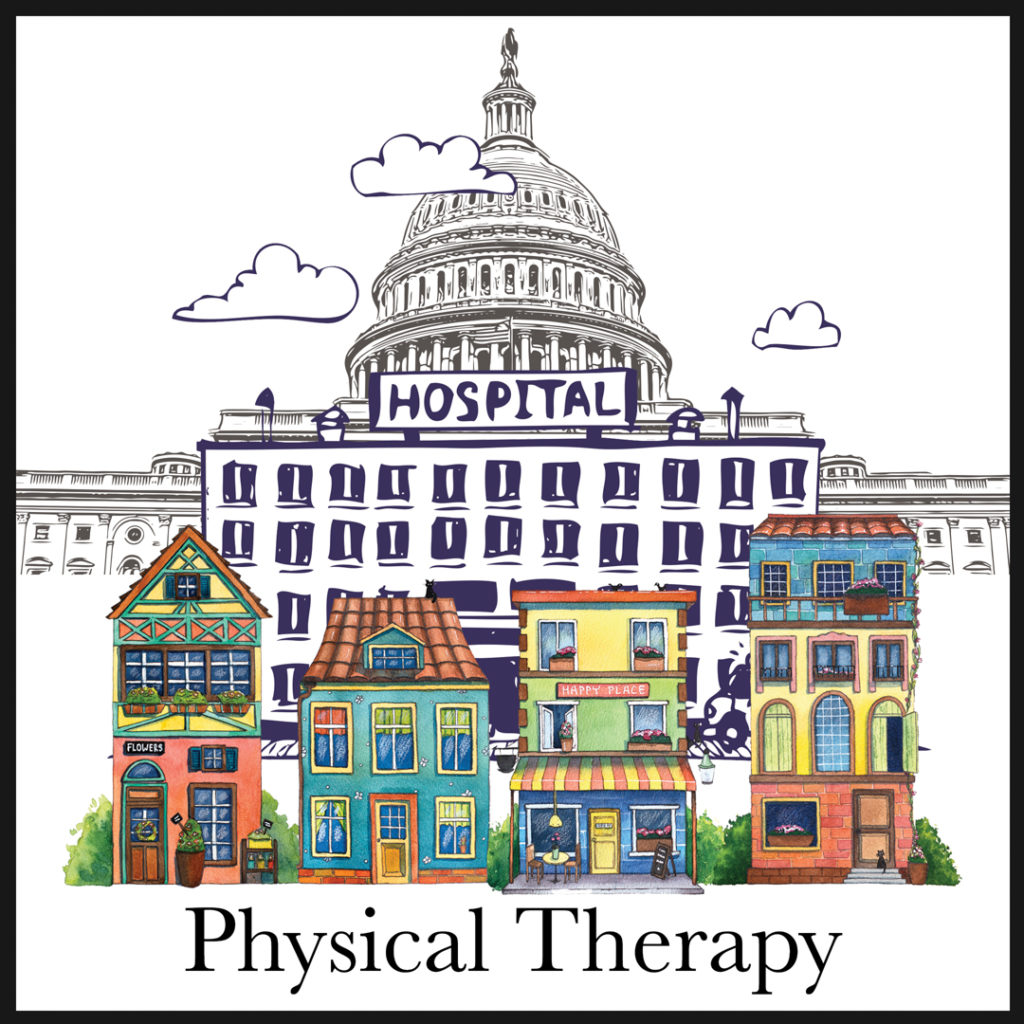
Physical Therapy Care Logistics
- (Includes Occupational Therapy, Fitness, Body Compositional Testing)
- Infrastructure Loan Cost: $163.55 Billion covers the building of PT Care in every Community.
INFRASTRUCTURE:
- $50 Million X 3271 = $163.55 Billion, which yields $281.1 Billion. Monthly payments would be $780.8 Million, or $9.37 Billion a year
- For Body Compositional Testing, would need up to 25 scanners X $20k to measure everyone in a 3-month period = $500k cost X 3271 = $1.64 Billion
SALARIES:
- Physical Therapists ($95k salary) – PTs are capable of running large classes by themselves, while drawing up training and exercise routines for individuals of all ages and fitness levels. Three PT’s can service an entire community. $95k X 3 = $285k X 3271 = $932.24 million in salaries
- Equipment – Each PT may need $10,000 in equipment; we will figure $30,000 to outfit our activity classes X 3271 spaces = $98.2 million
- High School fitness and PT unit will have student labor, which is cheaper, at $7.50 / hr. Some jobs could entail as much as 20 hours a week of work. We might employ as many as 100 kids in various health care jobs.
- 100 students X $7.50 / hr. salary X 20 hours a week X 40 weeks a year = $600k X 3271 = $2 Billion
- Actual Physical Therapists will cost $90k a year, and can easily utilize 2 Physical Therapy Assistants ($60k each). Let’s see if we can keep 6 of these Teams busy, possibly by also fashioning the fitness programs for the local schools as well.
$210k X 6 = $1.26 million in salaries X 3271 facilities = $4.2 Billion
Women’s Health (Outpatient) / Maternity Care
Maternity Care (Begin with the End in Mind) All things mother and child will be addressed: mothers connected to all possible help, mothers connected to other mothers, pre-pregnancy assessments, access to contraception, postpartum depression counseling, exercise, weight issues, nutrition, eliminating all risk factors, etc.
Stats say 1223 in 100,000 population are born each year (3-4 per day). 380 of these (1+ a day) are Caesarian sections. The average stay is 2.6 days, meaning we would need 11 beds per Community.
Preventive Care Services
- All OB/GYN preventive health procedures will be scheduled at this site (breast, cervix, etc.), as well as a thyroid test, bone mineral density test, mammogram, Clinical breast exam, colorectal testing, fasting plasma glucose test, Pap test and HPV test, SDI tests, Immunizations, etc. – other outpatient procedures include Breast Biopsy, Mastectomy (Radical), Caesarean Section, Hysterectomy (Abdominal / Vaginal), Laparoscopy, Tubal Ligation
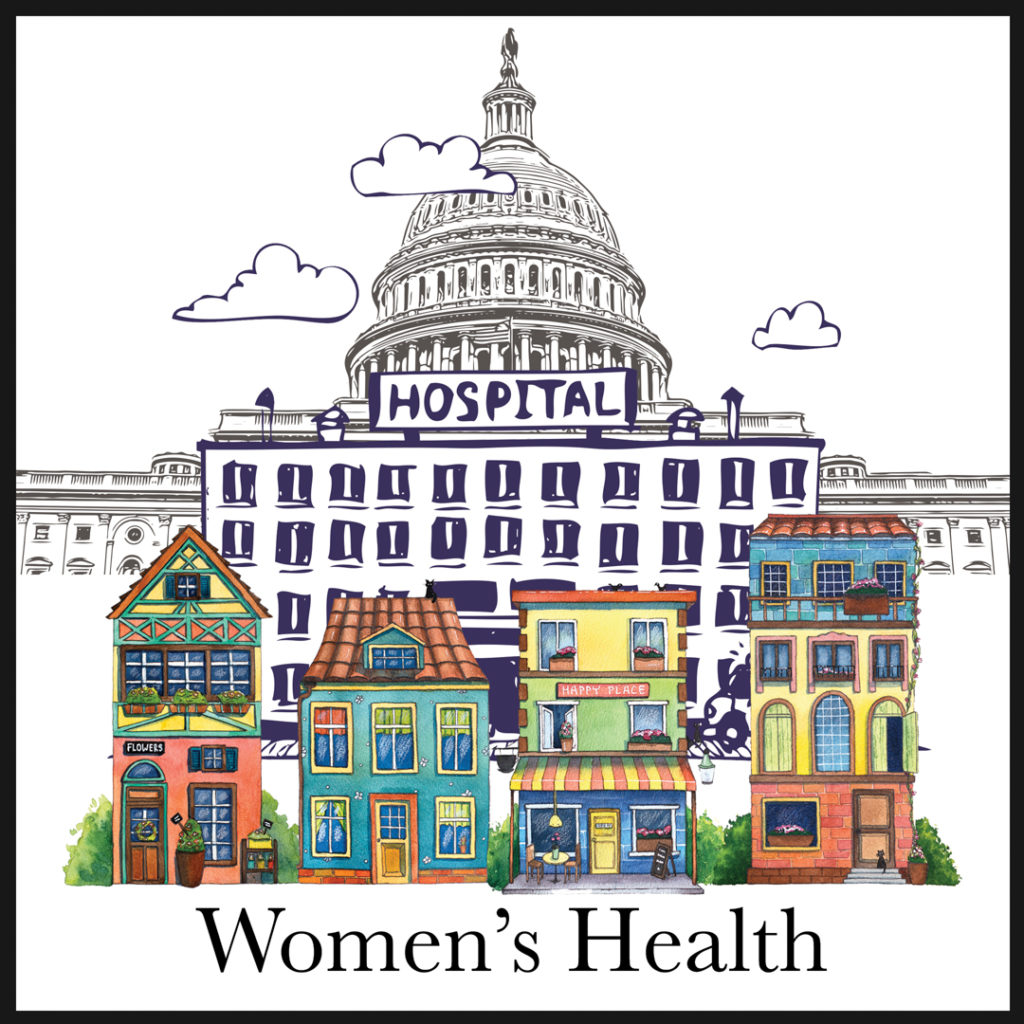
Women’s Health / Maternity Care Logistics
Infrastructure Loan Cost: $73.6 Billion covers the building of Maternity Care in every Community.
Maternity Care – A “Maternity Team” will include:
- a maternal fetal medicine physician ($500k)
- an obstetrician /gynecologist (OB/GYN) ($325k)
- a cardiologist ($580k)
- a midwife (present prenatal through postpartum) ($120k) NOTE: we already paid for them
- a nurse practitioner ($115k)
- a pediatrician – babies need checkups at birth, 3 to 5 days after birth and then at 1, 2, 4, 6, 9, 12, 15, 18 and 24 months ($230k)
Administration
- Medical Director ($75k)
- Receptionist ($35k)
- Admitting clerk ($35k)
At Time of Birth:
- Labor / Delivery Nurse ($170k)
- Anesthesiologist ($400k)
- Anesthesiologist Assistant ($125k)
- OB Tech / Assistant ($120k)
- Scrub Nurse / Specialist ($85k)
- Two extra theatre nurses ($70k each)
Total per Team = $3 Million
Babies come out when they feel like it apparently, but with only 4 babies per day, cannot see hiring more than 4 of everybody to do the deliveries, with people on call this number can perhaps be reduced substantially. $3 million X 4 Teams = $12 Million X 3,271 facilities = $39.3 Billion / yr
Extra Pediatricians: Between Urgent Care and the “Baby Squad” and the Doctor’s offices, we will already employ enough Pediatricians, but just for reference, we have 18,000 children per 100,000 population under age 15, and they will need 2 visits a year or 36,000 patient visits. Each Pediatrician could see 100 kids a week, which means we better have at least 8 Pediatricians employed per 100,000 population.
Extra OB / GYN: We need to make sure we also have 8 of these employed as well, to handle the 40,000 women in each 100,000 population
NOTE: within the 4 Maternity Teams, we have 4 pediatricians and 4 OB/Gyn on our staff.
INFRASTRUCTURE COSTS
- 11 rooms / beds X $1.5 Million per bed =$16.5 million per Hospital
- Add 2 OR’s ($6 million) = $22.5 million X 3,271 Centers = $73.6 Billion Loan
EXTRA COSTS:
- 17,000 women out of 100,000 population will need some of the bigger tests, or 65 per weekday A Team for this might include:
- 1 Radiologist – $400,000 / yr
- 1 Radiologic Tech – $60,000 / yr
- 2 Mammographers – $75,000 / yr each
- 2 MRI Techs – $80,000 / yr each
- 2 X-Ray Techs – $55,000 / yr each
- 2 Cat Scan Techs – $75,000 / yr each
TOTAL = $1 million X 3271 = $3.3 Billion
Our working number for extraneous costs is 40% of total salaries or $39.3 Billion + $3.3 Billion = $42.6 Billion X 40% = $17 Billion
Outpatient / Men’s Care
Medical Specialists will perform scheduled same-day procedures, or meet with patients pre or post operation. Men’s preventive care, such as colonoscopies, will be performed. Other procedures include: Arthroscopy, Burn Excision/Debridement, Cataract Surgery, Circumcision, Dental Restoration, Gastric Bypass, Head and Neck Surgery, Knee/Hip Replacement, Liver Resection, Lung Resection, Major Abdominal Procedures, Major Vascular Surgery, Mediport, Insertion or Removal, Prostate Surgery, Removal of Hardware, Sinus Endoscopy, Tonsillectomy, Vasectomy, Ventral Hernia
Stats say 3,547 to 4,714 out of 100,000 will receive outpatient surgery in a year (13-18 per day in a 5-day week).
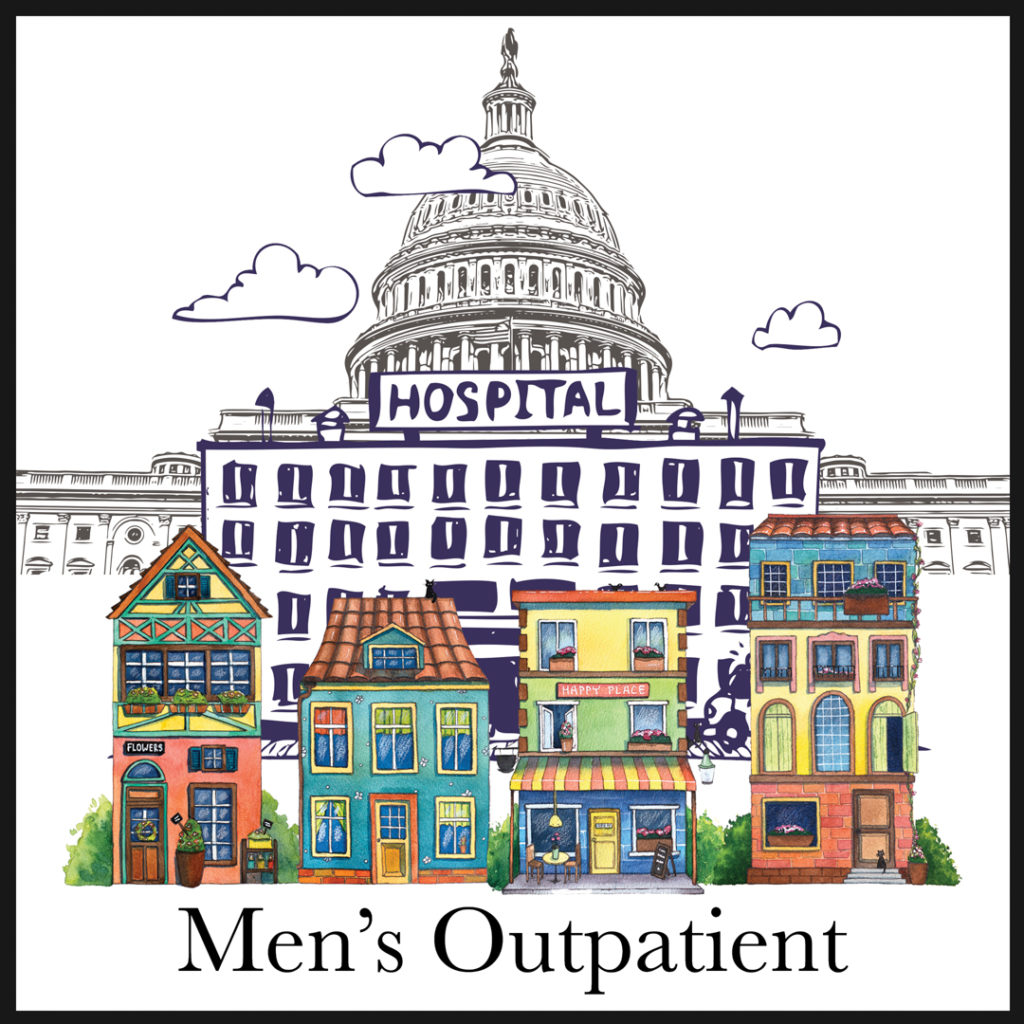
Outpatient / Men’s Care Logistics
Infrastructure Loan Cost: $32.7 Billion covers the building of Outpatient Care in every Community.
We can perform 3 surgical procedures per OR each day, and 4-5 procedures per non-surgical room in a day. Surgery centers with more than 4 operating rooms perform around 24 cases per day, those with 1-2 operating rooms perform an average of 12 per day
Cost is approximately $1 million dollars per operating room. Some patients may be admitted to the hospital after certain types of outpatient surgery such as bariatric surgery, joint replacement, or other elective surgery.
Plan:
We will build 3 Operating Rooms per 100,000, one of them a Hybrid.
INFRASTRUCTURE COSTS:
- 3 operating rooms = $5 Million
- 12,500 sq. ft. X $400 / sq. ft. Facility = $5 million
- $10 million X 3,271 Centers = $32.7 Billion
COSTS:
According to the experts, total operating expenses = $1,236.03 per case X 1909 (cases surgical and non-surgical per OR) X 3 (Operating Rooms per ASC) X 3271 (ASC’s we will build) = $23.2 Billion. NOTE: My calculation was $32.9 Billion. We will use this bigger number just in case things get more expensive than anticipated.
PREVENTIVE CARE costs:
17,000 men out of 100,000 population will need some of the bigger tests like colonoscopies, performed perhaps every 5 years, meaning 13 may need to be performed a day (65 per week)
A Team for this might include:
- 2 Gastroenterologist ($450k)
- 1 Anesthesiologist ($400k)
- 1 Anesthesiologist Assistant ($125k)
- 2 Scope Techs – ($80k each)
- 2 Med Techs – ($55k each)
- 4 registered nurses – ($105k each)(for sedation, recovery, admit) Administration
- Medical Director ($75k)
- Receptionist ($35k)
- Admitting clerk ($35k)
This may be overkill, but this Team costs $2.3 million x 3271 Facilities = $7.4 Billion
Doctor Care
“Advanced Practitioners” (Physician Assistants / Nurse Practitioners) will be shouldering some of the workload, writing prescriptions, ordering refills, referring patients for more Advanced Care, or performing yearly physicals. The physicians, once they are no longer in the trenches sewing us up and keeping us breathing, can take jobs overseeing / managing Advanced Practitioners in an office setting.
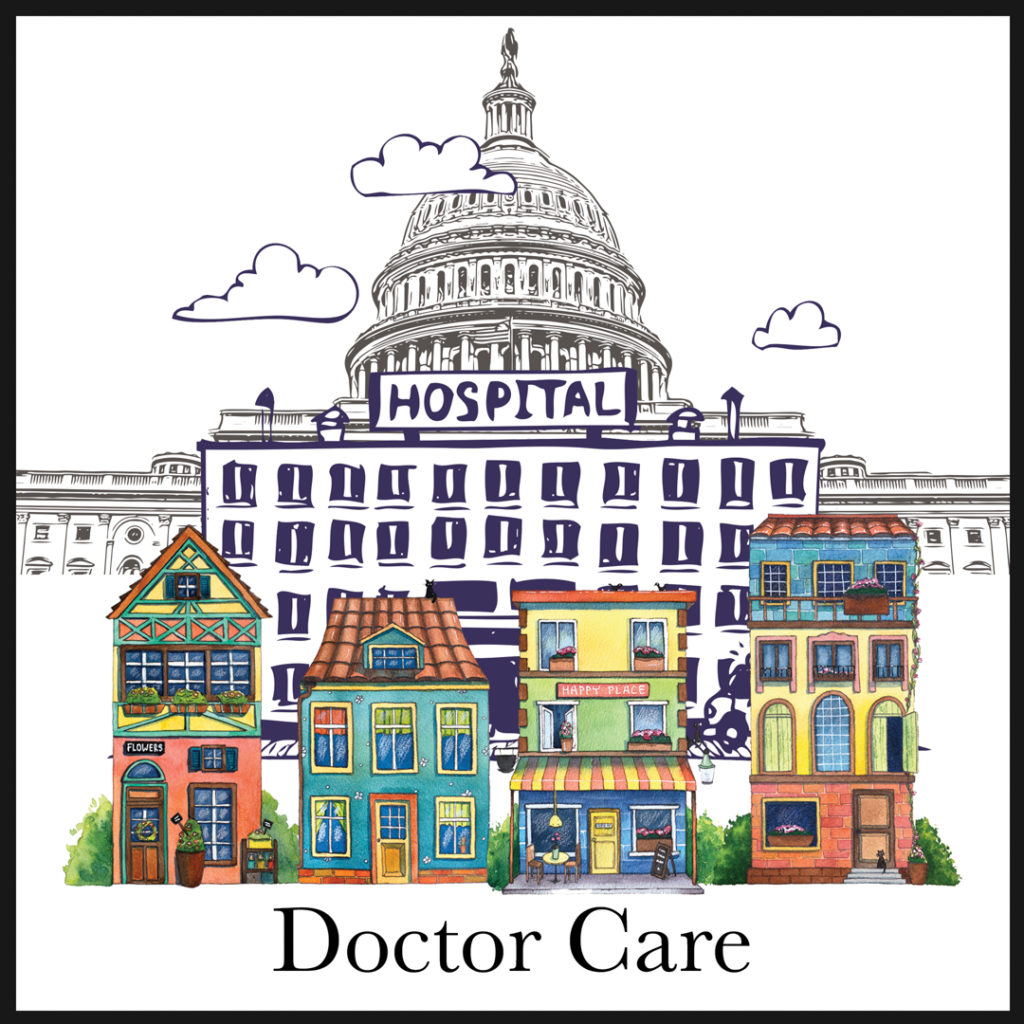
Doctor Care Logistics
Infrastructure Loan Cost: $16.4 Billion covers the building of Doctor Care in every Community.
5 Physician Teams will each need 5,000 square feet of space (18 Exam rooms, waiting rooms,
reception area, offices, bathrooms, lab, possible X-ray room, etc., for a total of 90 Exam rooms) =
25,000 sq. ft. @ $200 per sq. ft. = $5 million per 100,000 population Community.
NOTES:
- currently we have 75 Primary Care Physicians per 100,000 population
- nurse practitioners, physician assistants, and midwives have the skills to do much of the general health care that we require
- We are no longer out to make a buck, just make a difference
- Working number: 100,000 people at 2 visits per year = 200,000 visits
STRATEGY:
Each Team works 18 exam rooms. A Physician Team consists of:
- 2 Physicians ($210k) who oversee 9 exam rooms each
- 6 Medical Assistants ($40k) who bring patient back, do all preliminary work, and clean room after patient leaves
- 3 Physician Assistants ($120k) / 3 Nurse Practitioners ($115k) who each work 3 exam rooms, under supervision of the head Physicians
- 6 Medical Technicians [digital scribes (EHR)] ($50k) who follow NP’s / PA’s around, digitally recording all data, and perform imaging, tests, etc
- 2 Administration Staff (receptionist / Manager) ($35k / $75k)
One Team costs $1,765,000 X 6 Teams = $10.6 million X 3271 regions = $34.64 Billion in salaries
Let’s say we employ 6 Teams total. In a six-week period, each Team sees patients 6 hours a day, 5 days a week for four weeks, spends one other week working an extra 6 hours on a Saturday (for a 36 hour week), and has one week where they are only required to work on Saturday (The Physicians can decide whether this is a “week off” or if the extra Team is “on call”, or if some of that week is needed to “catch up” on something).
With each NP / PA getting a Medical Assistant and a Medical Tech (assistant / scribe) and 3 exam rooms, we expect them to average seeing 4 patients an hour each. 6 (hour workday) X 4 (15-minute appointments per hour) X 6 (NP’s / PA’s) X 5 (days a week) X 5 (teams working at a time) + Saturdays (6 hours X 4 patients per hour X 6 NP’s / PA’s X 2 Teams) X 52 (weeks a year) = 202,176 visits a year
The calculations confirm that (in theory) 6 Teams can cover over 202,000 patient visits in a year, or 2 visits for the entire 100,000 population in their care. We do not want our health care staff to burn out by working too much, but since we are paying everyone a “salary”, they are required to take care of their 100,000 patients regardless of the hours they are forced to accrue. We could get nearly 68,000 more “patient visits” by making everyone work 8 hours a day instead of the 6-hour day currently suggested. If we take the 90-room facility and force all 6 teams to work, we would need to allot only 15 exam rooms per Team instead of 18, which is still plenty to do the job. While this might be an option worth considering occasionally, it actually does not raise the number of patient visits considerably, and giving each Team that one week off out of every 6 would be worth it to get the most out of each member.
SALARIES
- 2-Physician Team = $1.765 Million
- 6 teams per 100,000 population = $10.6 Million a year
Total US Cost = $34.64 Billion a year
OPERATING COSTS:
40% X $34.64 Billion = $13.86 Billion
Doctor Count so far:
- 12 for doctor’s offices
- 6 for urgent care
While many primary care physicians are employed by the places where they work, some have private practices. Some are independent contractors, who bring their own patients, and basically pay rent to the facility they use. I worry how primary care physicians will fare in this system:
- In the old system, we sometimes see a primary care physician in order to procure a prescription, or a prescription refill, or a referral for something, or a basic physical. These can be done by Nurse practitioners or Physician Assistants with a single Doctor overseeing things.
- In the old system, many primary care physicians own their own medical care facilities, so perhaps a gastroenterologist could send you to a colonoscopy center that they happen to own (or sell you a device at a mark up from a Physician-Owned Distributor [POD] that they happen to own). In this new system doctors won’t be able to own and profit from this form of entrepreneurship.
- In the old system, primary care physicians make more money through having nurse practitioners, surgical technicians, physician assistants, and midwives under them (called “extenders”), seeing double and triple the patients in order to maximize revenue (even the extenders can have extenders). To cut costs, we won’t need any middlemen in the system. Primary care physicians have shown us that it might be smarter to hire these less expensive “Advanced Practitioners” instead of the more expensive primary care physicians, when it comes to basic health care needs.
- Primary care physicians might opt to be an independent contractor. This is why you might get a facility fee from a hospital or outpatient center, and then get a separate bill for the doctor and many other things (sometimes for doctors you might not remember seeing at all). Yeah, we ain’t doing that anymore.
TAKEAWAYS
Experience has shown that when government subsidizes private business, private business will take advantage of it. If we (the government) pay out for services from private practices, we cannot control patients getting care they do not need, doctors billing us for things they did not do, doctors running extra tests using their own equipment and sticking us with the bill. This will lead to government oversight of all of this, expanding government and costing us even more, to which the private sector will complain about “government being too big”, and rally a bunch of us taxpayers into voting for the private sector to continue to take our money while blaming THE GOVERNMENT for it (try to remember, the government is now “us”, the private sector is “them”)
Bottom Line: our new goal is to proactively keep people healthy rather than make more money by waiting for them to get sick. By trying to drive the medical bills lower, will it be the regular old doctor who will feel the crunch?
NOTE: the “Residents” in hospitals are the unsung heroes of the current system, doing a lot more work than they get paid for. The Federal Government used to subsidize their training. We will continue to do this. But in the old system, hospitals skimmed off the top, overcharging the government and pocketing the extra money. Now we will pay the true (lower) cost. Our new system will pay for a doctor’s education, give the doctor a job, and supply the doctor with affordable housing for 4 years until their educational “debt” to Us is paid back.
Dental Care
We need one dentist for every 1500 active patients.
A hygienist can see 12 patients per 8-hour workday in two hygiene rooms with a hygiene assistant. (Our new 30-hour week means only 45 patients a week per hygienist). In a 100,000-population area, we will have the potential to book 200,000 hygienist appointments per year, and 100,000 x-rays / checkups.
STRATEGY:
- with $20 copay, we will cover one dental checkup / cleaning / X ray appointment each year
- with another $20 copay, we will cover the 2nd hygienist cleaning visit each year
- All procedures (braces, bridges, implants, root canals, etc.) will be offered “at cost” plus a set fee for the dentist staff. 4 – we will put a maximum annual benefit or coverage limit of $2000 a year on all patients.
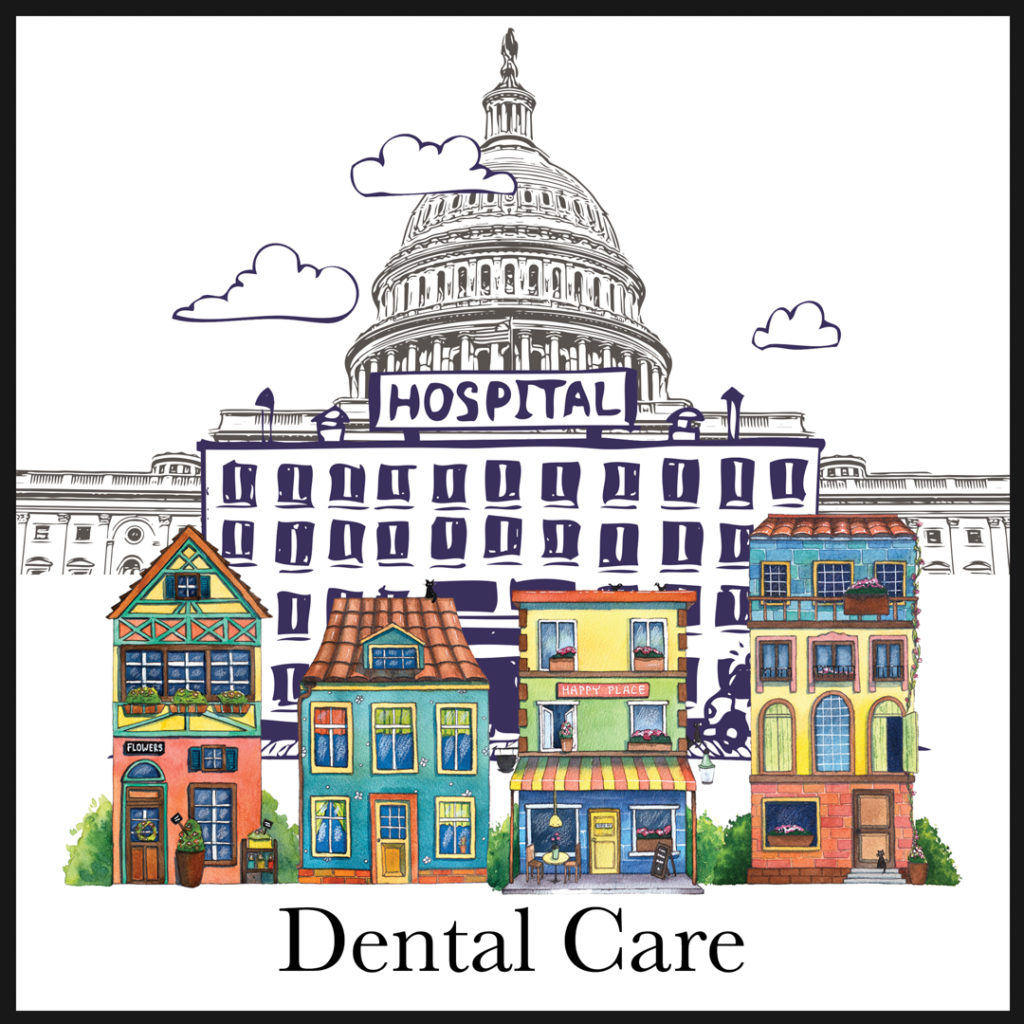
Dental Care Logistics
Infrastructure Loan Cost: $39.3 Billion covers the building of Dental Care in every Community.
New Model:
6 dentists / 6 hygienists / 6 assistants / 6 staff in 12 rooms X 10 practices that must handle 10,000 people each
INFRASTRUCTURE:
400 sq. ft. per room X 12 rooms X $250 per sq. ft. = $1.2 million X 10 = $12 Billion X 3271 = $39.3 Billion
SALARIES:
- 6 dentists make $150,000 each = $900,000
- 6 hygienists make $75,000 each = $450,000
- 6 dental assistants make $45,000 each = $270,000
- 6 staff make (Manager, Lab techs, receptionist, accounts)
- (2) X $20 / hr. X 30 hours X 50 weeks = $ 60,000
- (2) X $25 / hr. X 30 hours X 50 weeks = $ 75,000
- (2) X $30 / hr. X 30 hours X 50 weeks = $ 90,000
TOTAL = $1.85 Million in salaries
NOTE: Have specialties within each practice: Endodontist, Oral Surgeon, Orthodontist, and
Pediatric Dentist
COSTS:
- $55k in dental supplies X 6 = $330,000
- $15k office supplies X 6 = $ 90,000
- $5,000 in repairs X 6 = $30,000
- Wireless digital dental radiograph = $50,000
TOTAL = $500,000
ASSESSMENT:
We will need $2.3 million to run each office X 10 offices = $23 million per 100,000 population X 3271 = $75.23 Billion

